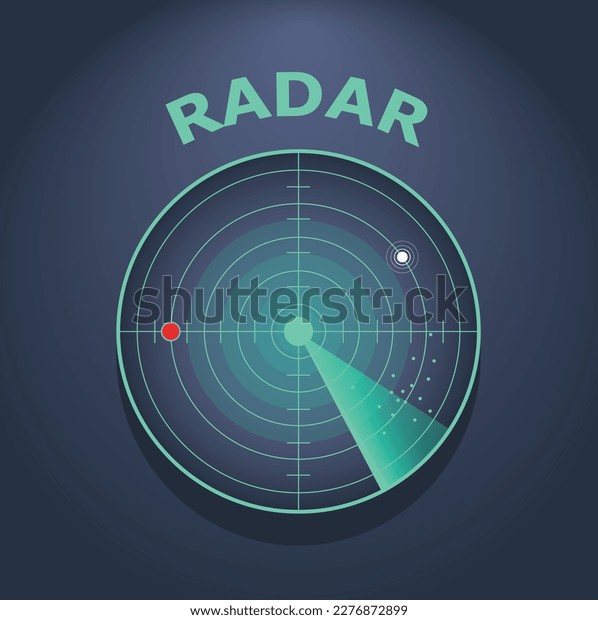Clean Energy's Unexpected Enemies: Threats To A Growing Industry

Table of Contents
Political and Regulatory Hurdles
Navigating the complex landscape of politics and regulations is a significant challenge for the clean energy industry. Consistent and supportive policies are crucial for attracting investment and fostering innovation in renewable energy and sustainable energy solutions.
Shifting Government Policies
The unpredictable nature of government policies creates significant uncertainty for clean energy developers.
- Changes in subsidies: Frequent changes to subsidies and tax incentives for renewable energy projects make long-term planning difficult and discourage investment.
- Permit approvals: Lengthy and complex permit approval processes can significantly delay project development, increasing costs and potentially rendering projects unviable.
- Regulatory frameworks: Conflicting regulations across different jurisdictions create further hurdles, adding complexity and cost to cross-border renewable energy projects. This regulatory uncertainty discourages long-term investment and leads to project delays, hindering the growth of sustainable energy.
Lobbying Efforts from Fossil Fuel Industries
Powerful fossil fuel lobbies actively work against the expansion of clean energy through various tactics.
- Funding of climate change denial: These lobbies fund campaigns that spread misinformation about climate change, undermining public support for renewable energy.
- Lobbying for deregulation: They lobby for deregulation that weakens environmental protection laws and creates a less favorable environment for clean energy development.
- Influencing policy decisions: Their significant political donations influence policy decisions, often resulting in policies that favor fossil fuels over renewable energy options. This active opposition constitutes a major threat to clean energy.
Economic and Financial Challenges
The economic viability of clean energy projects is often hampered by several factors, impacting the transition to a sustainable energy system.
Intermittency and Grid Integration Issues
Renewable energy sources like solar and wind power are intermittent, meaning their output fluctuates depending on weather conditions. Integrating these sources into existing grids presents significant challenges.
- Balancing supply and demand: Managing the fluctuating supply of renewable energy requires sophisticated grid management systems and often necessitates backup power sources.
- Managing fluctuations in power output: Sudden changes in renewable energy generation can destabilize the grid, requiring advanced grid infrastructure and energy storage solutions.
- High upfront costs of grid modernization: Upgrading the grid to accommodate intermittent renewable energy sources requires significant investment in smart grid technologies and energy storage.
High Initial Investment Costs
The upfront costs associated with building renewable energy infrastructure are substantial, creating a barrier to entry for many smaller developers.
- Need for significant upfront investment: Building solar farms, wind farms, and other renewable energy facilities requires significant capital investment.
- Limited access to capital for smaller projects: Smaller developers often struggle to secure the necessary financing, limiting their participation in the clean energy market.
- Competition for funding with other sectors: Renewable energy projects compete for funding with other sectors, making it challenging to secure sufficient capital for large-scale deployment.
Technological and Infrastructure Limitations
While technological advancements are crucial for the growth of clean energy, several limitations remain.
Technological Advancements and Scalability
Continued technological breakthroughs are essential to improve the efficiency, reduce the cost, and enhance the scalability of clean energy technologies.
- Battery storage technology advancements: Improved battery storage is crucial for addressing the intermittency of renewable energy sources.
- Improving solar panel efficiency: Increased efficiency of solar panels will reduce the land area required for solar farms and lower the overall cost of solar energy.
- Developing more efficient wind turbines: Advances in wind turbine technology will increase energy output and reduce the cost of wind power.
Lack of Skilled Workforce
A shortage of skilled labor poses a significant challenge to the construction, operation, and maintenance of clean energy infrastructure.
- Need for specialized training programs: Investment in education and training programs is essential to develop a skilled workforce capable of supporting the growing clean energy sector.
- Attracting and retaining talent: The clean energy industry needs to compete with other sectors to attract and retain skilled workers.
- Addressing the skills gap: Addressing the skills gap requires collaboration between educational institutions, industry, and government to ensure a sufficient supply of skilled labor.
Social and Public Perception Barriers
Social acceptance and public perception play a crucial role in the success of clean energy projects.
Public Acceptance and NIMBYism
Community opposition ("Not In My Backyard") to renewable energy projects due to concerns about visual impacts, noise pollution, or land use is a common challenge.
- Addressing community concerns: Open communication and engagement with local communities are crucial to address concerns and gain public acceptance for renewable energy projects.
- Transparent communication: Transparent communication about project benefits and potential impacts is essential to build public trust and support.
- Finding suitable locations for renewable energy projects: Careful site selection that minimizes environmental and social impacts is crucial for mitigating community opposition.
Misinformation and Public Awareness
Misinformation campaigns and a lack of public awareness about the benefits of clean energy hinder its adoption.
- Combating misinformation: Active efforts are needed to combat misinformation and promote accurate information about renewable energy technologies and their benefits.
- Raising public awareness: Public education campaigns can help raise awareness about the environmental and economic benefits of clean energy.
- Highlighting the environmental and economic benefits: Emphasizing the positive impacts of clean energy on the environment and the economy can help sway public opinion.
Conclusion
The transition to a clean energy future faces several significant threats. Political and regulatory hurdles, economic and financial challenges, technological and infrastructure limitations, and social and public perception barriers all pose significant obstacles to the continued growth of renewable energy and sustainable energy solutions. Overcoming these threats to clean energy is crucial for a sustainable future. By understanding these challenges and actively supporting policies that foster clean energy development, we can pave the way for a brighter, more sustainable tomorrow. Learn more about how you can contribute to the growth of clean energy and help overcome these unexpected enemies. Let's work together to build a future powered by clean, renewable energy.

Featured Posts
-
 Ivoire Tech Forum 2025 La Transformation Numerique En Cote D Ivoire
May 20, 2025
Ivoire Tech Forum 2025 La Transformation Numerique En Cote D Ivoire
May 20, 2025 -
 The Ultimate Guide To Solo Travel Freedom And Exploration
May 20, 2025
The Ultimate Guide To Solo Travel Freedom And Exploration
May 20, 2025 -
 Arsenal Target Matheus Cunha Wolves Starlet Eyed Under New Director
May 20, 2025
Arsenal Target Matheus Cunha Wolves Starlet Eyed Under New Director
May 20, 2025 -
 Femicide Defining The Crime And Investigating The Reasons Behind Its Growth
May 20, 2025
Femicide Defining The Crime And Investigating The Reasons Behind Its Growth
May 20, 2025 -
 Aldhkae Alastnaey Yuhyy Aemal Ajatha Krysty Mn Jdyd
May 20, 2025
Aldhkae Alastnaey Yuhyy Aemal Ajatha Krysty Mn Jdyd
May 20, 2025
Latest Posts
-
 The Fallout Abc News Layoffs And The Future Of Show Name
May 20, 2025
The Fallout Abc News Layoffs And The Future Of Show Name
May 20, 2025 -
 Job Exchange Scandal Rocks The Navy Admiral Burkes Bribery Conviction
May 20, 2025
Job Exchange Scandal Rocks The Navy Admiral Burkes Bribery Conviction
May 20, 2025 -
 Bribery Allegations Rock The Navy Retired Admirals Fall From Grace
May 20, 2025
Bribery Allegations Rock The Navy Retired Admirals Fall From Grace
May 20, 2025 -
 Show Name S Future On Abc News Post Layoff Analysis
May 20, 2025
Show Name S Future On Abc News Post Layoff Analysis
May 20, 2025 -
 Layoffs At Abc News What Happens To The Show
May 20, 2025
Layoffs At Abc News What Happens To The Show
May 20, 2025
